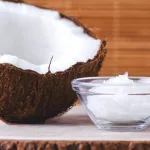
Sudden tooth pain can occur unexpectedly and has a variety of triggers, including cavities and periodontal issues. Some essential oils may temporarily relieve toothache discomfort and could offer additional advantages for oral health.
Essential oils shouldn’t replace a dental professional’s evaluation. Still, they might help ease symptoms while you wait for treatment.
Research indicates that certain essential oils can be effective for managing tooth pain. Below, we outline which oils are commonly used for toothache relief and explain how they work.
What are essential oils?
Essential oils are concentrated plant extracts. Different parts of a plant can be used to obtain these oils, such as:
- fruit
- flower
- stem
- root
- leaf
There are roughly 100 varieties of essential oils, each with its own aroma and set of properties. For centuries, people have used them medicinally to address pain, infection, and inflammation.
Several essential oils have contemporary research supporting their role in reducing toothache discomfort. We’ll review those next.
Optum Now is operated by RVO Health. By clicking on this link, we may receive a commission. Learn more.
Clove oil (Syzygium aromaticum)
Clove oil is obtained from the flower buds of the clove tree. It’s rich in eugenol, a compound with pain-relieving, anti-inflammatory, and antibacterial actions. Eugenol constitutes about 90 percent of clove oil.
Because of its analgesic effect, clove oil can reduce tooth and gum pain when applied topically. Its antibacterial activity may also help decrease bacteria that contribute to cavities.
One study examined clove oil’s impact on teeth exposed to apple juice in a lab model and found it lowered the rate of tooth decalcification. Decalcification is the loss of calcium that weakens enamel and can lead to decay.
The research also suggested clove oil might aid remineralization. Rebuilding mineral content strengthens enamel, helping protect teeth and roots from the pain triggered by hot, cold, or sweet stimuli.
How to useApply clove essential oil directly to a sore tooth. If it feels too strong, dilute with a carrier oil like olive oil. Mix about 5 drops of clove oil with 1 teaspoon of carrier oil, soak a cotton ball in the blend, and hold against the painful spot for 10 minutes. Repeat several times a day as needed.
Lavender (Lavandula angustifolia)
Lavender’s calming fragrance has made it a staple of aromatherapy for ages. While its effects specifically on tooth pain are less studied, multiple investigations show lavender can lessen perceived pain.
A small trial of 30 participants found that inhaling lavender oil significantly reduced stress and lowered felt pain.
A systematic review and meta-analysis pooling several pain-related studies reported that lavender inhalation reduced pain perception across different ages and conditions.
Lavender contains linalool, which exhibits antibacterial and antifungal effects and may help decrease plaque and combat cavities.
How to useFor toothache relief, diffuse lavender oil or light a lavender-scented candle and inhale. To benefit from lavender’s anti-inflammatory and antibacterial qualities for oral care, consider drinking lavender tea.
Peppermint (Mentha piperita)
Peppermint oil is distilled from the leaves and flowers of the peppermint plant. One of its principal constituents is menthol.
Menthol functions as an analgesic, helping to dull pain sensations. It has also been shown to produce a counter-irritant effect on skin — cooling followed by warmth — which can reduce perceived pain.
Peppermint also helps reduce dental biofilm and is commonly included in oral care products like toothpaste and mouthwash.
How to useFor a simple peppermint remedy, wet a peppermint tea bag and press it against the painful tooth or gum area.
Frankincense (Boswellia carterii)
Frankincense oil comes from the resin of Boswellia trees and is sometimes called olibanum.
Research suggests frankincense has both analgesic and anti-inflammatory properties. It may reduce pain and swelling by inhibiting 5-lipoxygenase, an enzyme involved in producing leukotrienes — inflammatory mediators.
In parts of China, frankincense is traditionally used with myrrh oil to ease pain and inflammation.
When included in oral preparations, frankincense has demonstrated antibacterial effects that can be useful against cavities and gum disease.
How to useApply frankincense oil directly to the sore tooth. If it stings, dilute with a carrier oil such as olive oil. Combine about 5 drops of frankincense with 1 teaspoon of carrier oil, saturate a cotton ball, and hold it on the affected area for 10 minutes. Repeat multiple times daily as necessary.
Is it safe to use essential oils for tooth pain?
Safe use begins with selecting high-quality essential oils. Because essential oils aren’t FDA-regulated, choose reputable brands and manufacturers. Check labels and purchase pure oils rather than blends pre-diluted with other ingredients.
Essential oils can cause allergic reactions in some people. Perform a patch test on your arm or leg before applying an oil near teeth or gums to ensure you don’t react adversely.
If an oil causes discomfort, dilute it with a carrier oil or distilled water before reapplying.
See a dentist if pain persists or if you develop any of the following:
- swelling
- inflammation
- fever
- pus drainage
Other natural remedies for toothache
Besides essential oils, other home measures may help ease tooth pain:
- Rinse with warm or cool salt water to clean the area and dislodge particles.
- Rinse with diluted hydrogen peroxide to help reduce inflammation and discomfort.
- Apply a cold compress to the jaw or cheek to reduce swelling.
- Mash a garlic clove into a paste and place it on the sore tooth to help fight bacteria and ease pain.
- Soak a cotton ball in vanilla extract and hold it against the tooth to numb it.
- Chew fresh guava leaves to help lower bacterial load.
- Use wheatgrass juice as a mouth rinse to combat bacteria.
The takeaway
Several essential oils, including clove and frankincense, may help relieve toothache discomfort.
When applying essential oils for tooth pain, dilute them in a carrier oil or distilled water if needed before use.
Essential oils are not a replacement for dental care. If you have persistent pain, swelling, or inflammation, schedule a dental visit for proper evaluation and treatment.


















Leave a Reply
You must be logged in to post a comment.